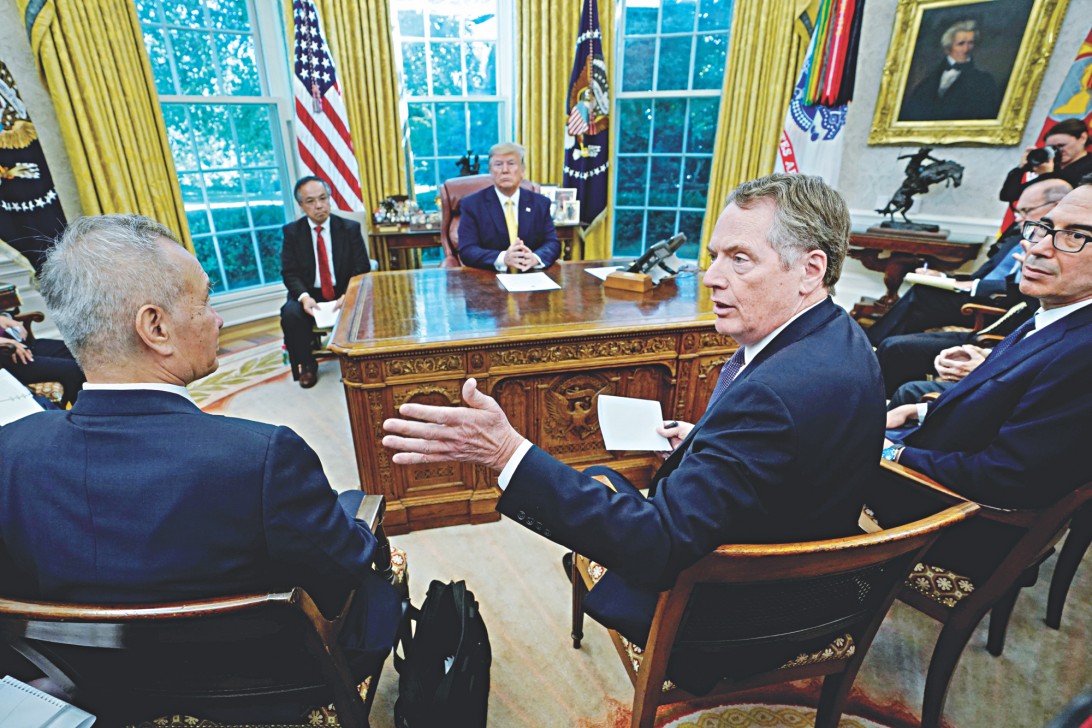US outlines phase 1 trade deal with China

US President Donald Trump on Friday outlined the first phase of a deal to end a trade war with China and suspended a threatened tariff hike, but officials on both sides said much more work needed to be done before an accord could be agreed.
The emerging deal, covering agriculture, currency and some aspects of intellectual property protections, would represent the biggest step by the two countries in 15 months to end a tariff tit-for-tat that has whipsawed financial markets and slowed global growth.
But Friday’s announcement did not include many details and Trump said it could take up to five weeks to get a pact written.
He acknowledged the agreement could fall apart during that period, though he expressed confidence that it would not.
“I think we have a fundamental understanding on the key issues. We’ve gone through a significant amount of paper, but there is more work to do,” US Treasury Secretary Steven Mnuchin said as the two sides gathered with Trump at the White House. “We will not sign an agreement unless we get and can tell the president that this is on paper.”
With Chinese Vice Premier Liu He sitting across a desk from him in the Oval Office after two days of talks between negotiators, the president told reporters that the two sides were very close to ending their trade dispute.
“There was a lot of friction between the United States and China, and now it’s a lovefest. That’s a good thing,” he said.
Liu took a different tone in his remarks, however.
“We have made substantial progress in many fields. We are happy about it. We’ll continue to make efforts,” Liu said.
China’s official state-owned news organization Xinhua said that both sides “agreed to make the efforts towards a final agreement.”
In an editorial published online by the state-run People’s Daily newspaper on Saturday, China called the latest round of talks constructive, frank and efficient and noted that while the two sides were moving toward a resolution, “it is impossible to resolve the problem by putting arbitrary pressure on the Chinese side.”
Trump, who is eager to show farmers in political swing states that he has their backs, lauded China for agreeing to buy as much as $50 billion in agricultural products. But he left tariffs on hundreds of billions of dollars of Chinese products in place.
His announcement, while seen as progress, drew some scepticism.
“I’m unsure that calling what was announced by President Trump an agreement is justified,” said Scott Kennedy, a China trade expert at the Center for Strategic and International Studies in Washington.
“If they couldn’t agree on a text, that must mean they’re not done. Wishing an agreement does not one make. This isn’t a skinny deal. It’s an invisible one.”
Mnuchin said the president had agreed not to proceed with a hike in tariffs to 30 percent from 25 percent on about $250 billion in Chinese goods that was supposed to have gone into effect on Tuesday.
